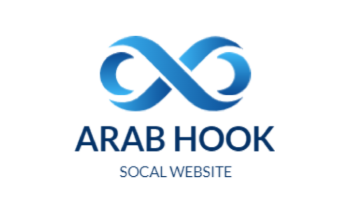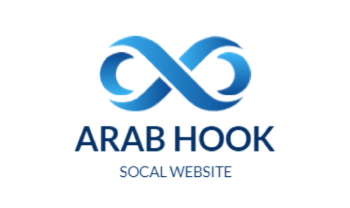Google Pay-Per-Click (PPC) advertising has transformed the way businesses reach potential customers online. Through Google Ads, marketers can create targeted ad campaigns that appear on search engine results pages (SERPs), Google partner sites, and across the Display Network. This article provides an overview of Google PPC advertising, how it works, and strategies to make the most of your ad budget to maximize visibility and conversions.
What Are Google PPC Ads?
Google PPC Ads are a form of online advertising where advertisers pay a fee each time a user clicks on their ad. The most common form of PPC on Google is Google Search Ads, which appear at the top of Google’s search results, displaying ads relevant to users pay per click campaign ' search queries. Other popular ad types include Display Ads, Shopping Ads, Video Ads, and App Ads.
Why Use Google PPC Advertising?
With over 3.5 billion searches per day, Google is an excellent place to reach users actively searching for information, products, or services. Google Ads allows businesses to:
- Increase Online Visibility: With ad placements on the first page of Google, you gain immediate visibility over organic results.
- Reach Targeted Audiences: PPC ads can be customized based on keywords, location, demographics, and user behavior.
- Control Budget and Costs: Advertisers set their budget and only pay when someone clicks, making it cost-effective when managed correctly.
- Generate Quick Results: Unlike SEO, which takes time to see results, PPC campaigns can drive immediate traffic and leads.
Types of Google PPC Ads
- Search Ads: These are text ads that appear on the top and bottom of Google’s search results when users search for specific keywords.
- Display Ads: Visual banner ads that appear on websites within Google’s Display Network, ideal for reaching audiences while they browse online.
- Shopping Ads: Ads for e-commerce sites that showcase products with images, titles, prices, and store information.
- Video Ads: Typically shown on YouTube, these ads can increase brand awareness and drive engagement with visually engaging content.
- App Ads: Ads that promote mobile apps on Google Search, Play Store, YouTube, and the Google Display Network.
How Google PPC Advertising Works
Google Ads operates on an auction-based system. Here’s how it works:
- Keyword Bidding: Advertisers bid on keywords relevant to their products or services. Bids are based on how much they are willing to pay for a click on their ad.
- Quality Score: Google evaluates ads based on Quality Score, which considers the relevance of the ad to the keyword, the ad's click-through rate (CTR), and the landing page experience. A high Quality Score can lead to better ad placements and lower costs.
- Ad Rank: Ad Rank determines the position of the ad on the page and is based on the bid amount and Quality Score. Higher-ranking ads appear at the top of search results.
- Cost-Per-Click (CPC): The final amount paid when a user clicks on an ad depends on the ad’s position and the bids of competing advertisers.
Setting Up a Successful Google PPC Campaign
-
Define Your Campaign Goals
- Determine what you want to achieve with your Google Ads campaign, such as increasing brand awareness, generating leads, or boosting sales. Clear goals will guide ad type selection and targeting options.
-
Conduct Keyword Research
- Use tools like Google Keyword Planner, SEMrush, or Ahrefs to identify relevant keywords that potential customers might use. Focus on keywords with high intent (e.g., “buy,” “hire”) to attract users ready to take action.
-
Choose Your Campaign Type
- Select a campaign type based on your goals. For instance, if you're targeting users actively searching for your products, Search Ads might be ideal. Display Ads are great for brand awareness, while Shopping Ads work well for e-commerce.
-
Create Compelling Ad Copy
- Ad copy should be clear, concise, and include a strong call to action (CTA) that aligns with user intent. Highlight unique selling points and use words that convey urgency, such as “limited time offer” or “free trial.”
-
Optimize Landing Pages
- Your landing page should be relevant to the ad, load quickly, and provide a seamless user experience. A well-optimized landing page can improve Quality Score, reduce bounce rates, and boost conversions.
-
Set Your Budget and Bids
- Set a daily budget based on your goals and adjust bids for keywords based on competition and relevance. Google Ads offers bid strategies like manual CPC, enhanced CPC, and automated bidding, which you can use depending on your experience level and campaign needs.
-
Target Your Audience
- Use Google’s targeting options, including location, demographics, and audience interests, to refine your audience. Custom audiences, remarketing lists, and similar audiences are also effective for targeting users who are more likely to convert.
Tips for Optimizing Google PPC Ads
-
Use Ad Extensions: Extensions provide additional information to users and can increase click-through rates (CTR). Popular ad extensions ppc ad agency include sitelink, call, location, and callout extensions.
-
Test Different Ad Variations: A/B testing can help you identify which ad copy, CTA, or keywords perform better. Rotate ads to find the best performers and continuously refine your approach.
-
Adjust for Mobile Users: With more users browsing on mobile, make sure ads and landing pages are mobile-friendly. Google’s mobile bid adjustment lets you increase or decrease bids for mobile traffic.
-
Implement Conversion Tracking: Use Google’s conversion tracking tools to measure actions taken on your site, such as form submissions, purchases, or sign-ups. This allows you to determine campaign effectiveness and ROI.
-
Use Remarketing to Re-engage Users: Remarketing ads target users who have previously visited your website. These ads remind users about your brand and encourage them to complete actions they may have abandoned, such as completing a purchase.
-
Optimize for Long-Tail Keywords: Long-tail keywords are more specific and often less competitive, making them cost-effective for targeting users with a clear intent to purchase or learn more about your offerings.
-
Regularly Analyze and Adjust: Monitor your campaign performance to understand metrics like CTR, CPC, and conversion rates. Regularly review and optimize bids, keywords, and ad copy based on performance insights.
Google PPC Metrics to Track
Tracking the right metrics helps you understand if your ads are performing as expected and where adjustments might be needed:
- Click-Through Rate (CTR): Measures how often users click on your ad. A high CTR indicates that your ad is relevant to the audience.
- Cost Per Click (CPC): Reflects how much you’re paying per click. Monitoring CPC can help manage ad spend and maximize ROI.
- Conversion Rate: Shows the percentage of clicks that result in desired actions. A higher conversion rate indicates that your ad and landing page are effective.
- Return on Ad Spend (ROAS): Calculates the revenue generated per dollar spent. ROAS helps determine overall ad profitability.
- Quality Score: Google’s measure of ad relevance and user experience. A high Quality Score leads to better ad placements and lower costs.
Benefits of Google PPC Ads
- Immediate Visibility: Unlike SEO, which can take google ppc ads time, PPC ads appear instantly, providing immediate exposure to target audiences.
- High Return on Investment (ROI): When managed effectively, Google PPC ads offer strong ROI by targeting high-intent keywords and optimizing ad performance.
- Audience Targeting Options: Google Ads’ sophisticated targeting options allow you to reach the right users at the right time.
- Data-Driven Decisions: Google Ads provides detailed analytics and insights, helping marketers make informed decisions to improve campaign performance.
Conclusion
Google PPC advertising is a powerful tool for driving traffic, generating leads, and achieving conversions. With clear goals, well-optimized campaigns, and continuous analysis, Google Ads can deliver exceptional results. While mastering Google PPC takes time, refining your strategy and staying adaptable can lead to long-term success and substantial growth for your business.
Visit Us: https://www.a1jinternational.com/



